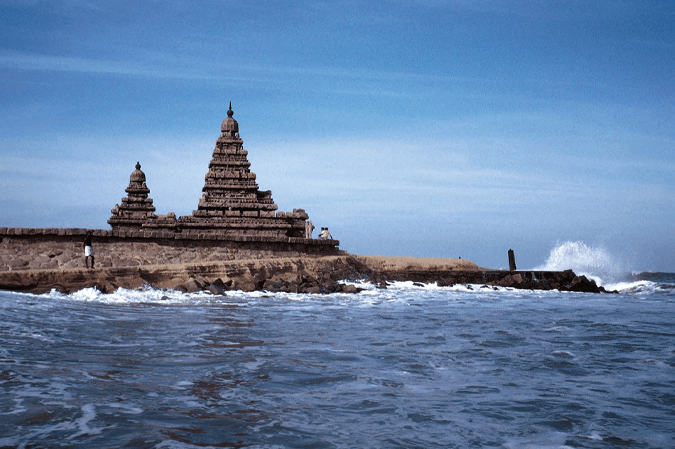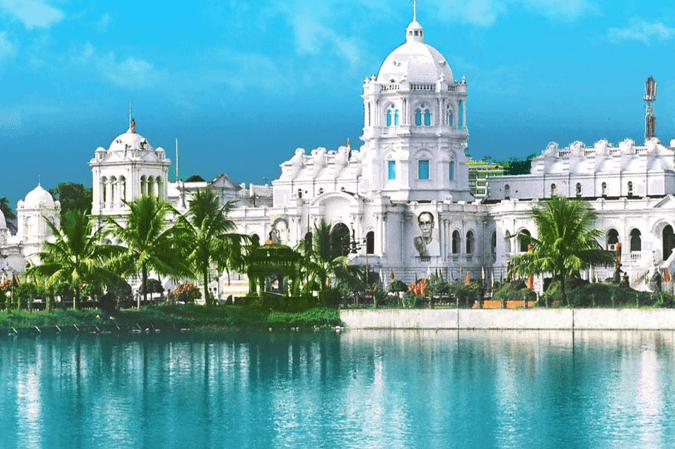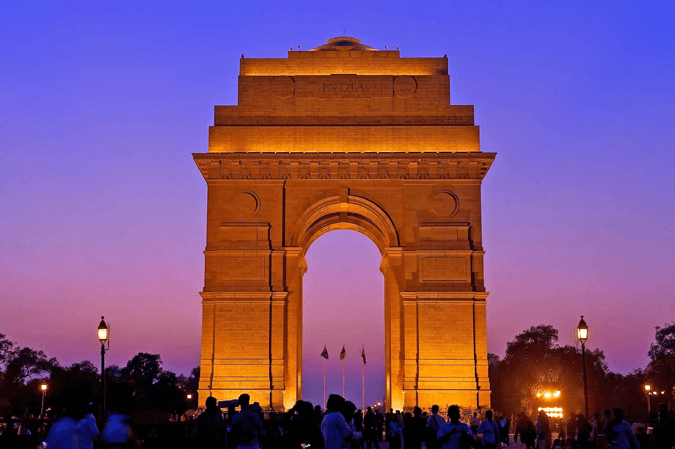1. History:
Tamil Nadu has a rich history that dates back thousands of years. It is the cradle of Dravidian culture and home to one of the oldest civilizations in the world. The region was ruled by several powerful dynasties, including the Cholas, Cheras, Pandyas, and Pallavas. These dynasties left a legacy of art, architecture, and culture, most notably seen in the grand temples across the state. Tamil Nadu was also a significant center of the Bhakti movement, which shaped the religious landscape of South India.
2. Landscape and Area:
- Area: Tamil Nadu covers an area of about 130,058 square kilometers, making it the 11th largest state in India.
- Landscape: The state has a diverse landscape that includes coastal plains, fertile river valleys, and hilly regions. The Eastern Ghats run along the state’s northwest, and the Nilgiri Hills are located in the western part of the state. Tamil Nadu is also known for its extensive coastline along the Bay of Bengal.
3. Climatic Conditions:
Tamil Nadu experiences a tropical climate with distinct seasons.
- Summer (March to June): Summers are hot and dry, with temperatures ranging between 25°C and 45°C (77°F to 113°F).
- Monsoon (June to September): The state receives rainfall from both the southwest and northeast monsoons, with the northeast monsoon being more significant.
- Winter (November to February): Winters are mild, with temperatures ranging between 20°C and 30°C (68°F to 86°F).
4. Historical Places:
- Mahabalipuram (Mamallapuram): Famous for its rock-cut temples and sculptures, this UNESCO World Heritage Site is an ancient port city established by the Pallavas.
- Brihadeeswarar Temple (Thanjavur): A UNESCO World Heritage Site, this temple was built by Raja Raja Chola I in the 11th century and is one of the largest temples in India.
- Madurai Meenakshi Temple: One of the most important pilgrimage sites in India, this temple is known for its stunning architecture and intricate carvings.
- Rameswaram: A sacred town that is an important pilgrimage site, known for the Ramanathaswamy Temple and its connection to the Ramayana.
- Fort St. George (Chennai): Established in 1644 by the British East India Company, this fort marks the beginning of Chennai as a city.
5. Festivals:
- Pongal: The most important festival in Tamil Nadu, celebrating the harvest season.
- Tamil New Year (Puthandu): Celebrated in April, marking the beginning of the Tamil calendar.
- Thaipusam: A festival dedicated to Lord Murugan, observed with fervor, especially in Palani.
- Navaratri and Deepavali: Major Hindu festivals celebrated across the state with traditional fervor.
- Karthigai Deepam: A festival of lights celebrated in Tamil Nadu, particularly in Thiruvannamalai.
6. Environment:
- Flora and Fauna: Tamil Nadu is home to a wide variety of ecosystems, including tropical forests, grasslands, and wetlands. The Western Ghats, a UNESCO World Heritage Site, is a biodiversity hotspot with many endemic species of plants and animals.
- Wildlife Sanctuaries and National Parks: The state has several protected areas, including Mudumalai National Park, Anamalai Tiger Reserve, and Gulf of Mannar Marine National Park.
- Environmental Challenges: Tamil Nadu faces environmental challenges such as deforestation, pollution, and urbanization. However, the state is also known for its efforts in conservation, particularly in the Nilgiris Biosphere Reserve.
7. Society:
- Demographics: Tamil Nadu is one of the most populous states in India, with a population of over 72 million people. It has a rich cultural heritage, with Tamil as its official language. The state is known for its classical music, dance (Bharatanatyam), and literature.
- Economy: Tamil Nadu has a diversified economy, with agriculture, manufacturing, and services sectors contributing significantly. It is one of the leading states in India in terms of industrialization, particularly in the automotive, textile, and IT sectors.
- Education: The state has a well-developed educational infrastructure and a high literacy rate. It is home to several prestigious institutions, including the Indian Institute of Technology Madras (IITM) and Anna University.
8. Interesting and Hidden Facts:
- Oldest Language: Tamil is considered one of the oldest languages in the world and is recognized as a classical language by the Government of India.
- First Indian State with a Solar Policy: Tamil Nadu was the first state in India to formulate a comprehensive solar energy policy.
- Unique Temple Architecture: Tamil Nadu is famous for its Dravidian temple architecture, with towering gopurams (gateway towers) that are characteristic of its temples.
- Maritime History: The ancient port city of Poompuhar (Kaveripattinam) was a significant maritime center in ancient times, with trade connections to Southeast Asia.
Sources:
- “Tamil Nadu State Profile” – Government of Tamil Nadu Official Website
- “India: A History” by John Keay
- “The Hindu Temples of Tamil Nadu” by George Michell
- National Geographic’s article on “Western Ghats: A Biodiversity Hotspot”
- The Ministry of Environment, Forest and Climate Change, India
- Tamil Nadu Tourism Development Corporation (TTDC) Publications
- Image Source: britannica



